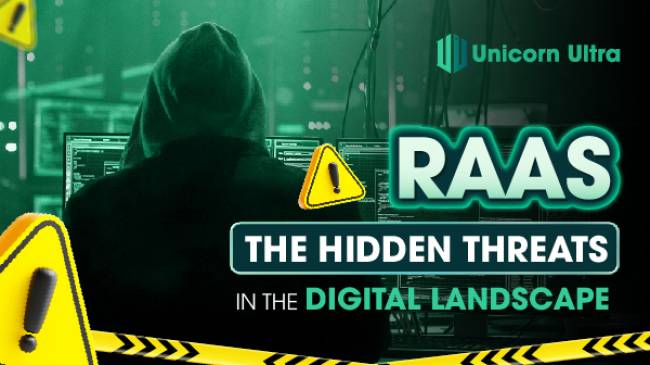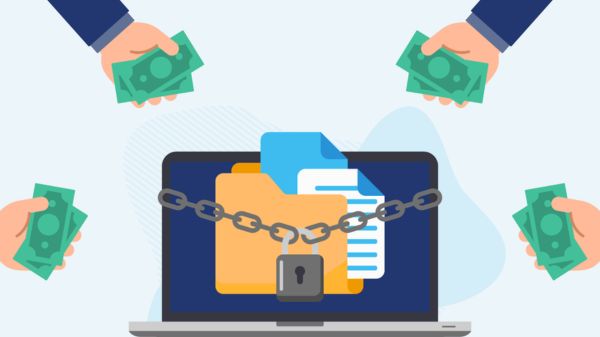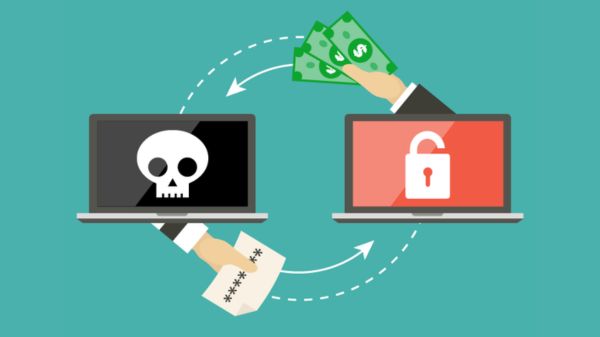In recent years, the world has witnessed an alarming rise in ransomware attacks, causing havoc for individuals and organizations alike. Among the various tactics employed by cybercriminals, one particular model has gained notoriety for its efficiency and ease of use - Ransomware as a Service (RaaS). This blog post aims to shed light on this evolving threat, explaining what is ransomware as a service, how RaaS operates, presenting examples from the wild, and offering crucial insights on preventing RaaS attacks.
Table of Contents
What is Ransomware as a Service (RaaS)?
Ransomware as a Service (RaaS) is a disturbing cybercrime business model that allows criminals to distribute ransomware to a wide range of targets without requiring advanced technical expertise. Essentially, RaaS operates on a rental basis, where aspiring attackers can purchase ready-made ransomware kits or subscribe to a service, gaining access to a user-friendly platform to deploy their malicious campaigns.

How does Ransomware as a Service work?
Ransomware as a Service operates through an underground marketplace, where cybercriminals advertise and sell their ransomware kits or services. These platforms, often hidden in the dark web, provide a way for criminals to monetize their malicious skills while minimizing the risks associated with being directly involved in attacks. The key steps involved in RaaS are as follows:
- Accessibility: RaaS platforms offer aspiring attackers easy access to ready-made ransomware kits or services. These kits typically include the ransomware code, encryption algorithms, payment infrastructure, and user-friendly dashboards to manage the attacks.
-Customization: RaaS allows attackers to tailor their ransomware campaigns based on their preferences. This customization often includes choosing target sectors, geographical regions, ransom demands, and even language options to increase the chances of successful extortion.
- Distribution: Once the ransomware is customized, the attackers can distribute it using various methods such as phishing emails, exploit kits, or malicious websites. By leveraging social engineering techniques, the attackers aim to trick victims into executing the malware unwittingly.
- Encryption and Ransom: Once the ransomware infects a victim's system, it encrypts critical files, rendering them inaccessible. The attackers then demand a ransom, usually in cryptocurrencies, in exchange for the decryption key. The payment process is typically facilitated through Bitcoin wallets or other anonymous platforms.
Examples of Ransomware as a Service
- GandCrab: One of the earliest and most notorious examples of RaaS, GandCrab was active from January 2018 to May 2019. It offered a sophisticated and user-friendly platform, allowing its affiliates to distribute the ransomware widely, generating substantial profits.
- Sodinokibi (REvil): Sodinokibi, also known as REvil, emerged in 2019 and quickly gained popularity among cybercriminals. This RaaS platform boasts advanced encryption techniques, distribution infrastructure, and even a helpdesk to support victims and facilitate payments.
- DarkSide: The DarkSide RaaS made headlines in 2021 with high-profile attacks targeting critical infrastructure. The operators behind DarkSide rented out their ransomware services to affiliates, taking a percentage of the ransom payments as commission.

Consequences of Ransomware Attacks
Ransomware attacks can have severe and far-reaching consequences for individuals, businesses, and organizations. These attacks can cause significant disruptions and financial losses, as well as damage to reputation and data integrity. Some of the main consequences of ransomware attacks include:
- Data Loss: Ransomware encrypts files and data, making them inaccessible to the victim. If the victim does not have backups or cannot recover the data through other means, they may permanently lose valuable information.
- Financial Loss: Victims are often forced to pay the ransom to regain access to their data. Even if the ransom is paid, there is no guarantee that the attackers will provide the decryption key. Additionally, businesses may face downtime, loss of productivity, and revenue loss during the recovery process.
- Reputation Damage: Ransomware attacks can tarnish the reputation of businesses and organizations. Customers, clients, and partners may lose trust in the victim's ability to protect sensitive information and may choose to take their business elsewhere.
- Operational Disruption: Ransomware attacks can disrupt business operations, leading to delays in services, missed deadlines, and reduced productivity. Critical systems may be rendered unusable, affecting day-to-day activities.
- Legal and Regulatory Consequences: Depending on the industry and the type of data involved, ransomware attacks may lead to legal and regulatory consequences for the victim. Organizations may be held liable for data breaches and face penalties for non-compliance with data protection laws.
- Loss of Intellectual Property: Ransomware attacks may target intellectual property, trade secrets, and sensitive corporate information. The theft or exposure of such data can have long-term impacts on a company's competitiveness and innovation.
- Crisis Management Costs: Dealing with a ransomware attack requires significant resources, including cybersecurity experts, forensic investigations, and crisis management teams. These costs can be substantial for both individuals and businesses.
- Supply Chain Disruptions: Ransomware attacks on one organization may spread to affect their partners and suppliers, causing widespread supply chain disruptions.
- Emotional and Psychological Impact: Ransomware victims may experience stress, anxiety, and feelings of vulnerability due to the invasion of privacy and the uncertainty of data recovery.
- Increased Cybersecurity Costs: After an attack, organizations often invest in enhancing their cybersecurity infrastructure to prevent future incidents, leading to increased expenses.
- Loss of Competitive Advantage: In the case of businesses, a successful ransomware attack can weaken their competitive advantage, especially if sensitive business information is stolen or leaked.
To mitigate the consequences of ransomware attacks, it is crucial for individuals and organizations to implement robust cybersecurity measures, including regular data backups, security updates, employee training, and the use of advanced threat detection and prevention systems.
How to Prevent Ransomware as a Service Attacks
- Regular Backups: Maintain secure and up-to-date backups of critical files and systems. This practice enables quick recovery without paying the ransom in case of an attack.
- Employee Education: Conduct regular training sessions to educate employees about phishing emails, suspicious links, and other social engineering techniques used in ransomware attacks. Heightened awareness can help prevent inadvertent clicks or downloads.
- Robust Security Measures: Implement robust cybersecurity measures, including firewalls, antivirus software, intrusion detection systems, and regular software updates. Additionally, consider using advanced threat detection solutions that employ machine learning and behavioral analysis to identify and stop ransomware attacks in real-time.
- Email and Web Filtering: Deploy effective email and web filtering solutions to block malicious content, including phishing emails and infected websites. These filters can prevent the initial entry point of ransomware into your systems.
- Patch Management: Regularly update all software and operating systems to patch any vulnerabilities that attackers could exploit. Unpatched systems often provide easy entry points for ransomware attacks.

How to recover data encrypted by Ransomware?
Recovering data encrypted by ransomware can be challenging, but there are some potential methods you can try. However, please note that there is no guarantee of success, and it's crucial to take immediate action to prevent further damage and loss of data. Here are some steps to consider:
- Isolate and Identify the Ransomware: First, disconnect the infected computer or device from the network to prevent the ransomware from spreading to other devices. Try to identify the specific type of ransomware you are dealing with, as some strains may have known decryption solutions.
- Check for Backups: If you have a backup of your important files stored separately from the infected device or network, you can restore your data from the backup. Regularly backing up your data is one of the most effective ways to mitigate the impact of ransomware attacks.
- Check for Decryption Tools: Some security companies and law enforcement agencies may release decryption tools for certain types of ransomware. Check online resources or contact cybersecurity experts to see if a decryption tool is available for the specific ransomware you encountered.
- Consult Security Experts: Reach out to cybersecurity professionals or a reputable IT security company to assess the situation and seek their advice on potential recovery options. They may have experience dealing with the particular ransomware strain and may be able to provide guidance.
- Check for Free Decryption Services: Some organizations, such as No More Ransom (https://www.nomoreransom.org/), offer free decryption services for certain types of ransomware. Check their website to see if they can assist with your case.
- Do Not Pay the Ransom: It is generally not recommended to pay the ransom as there is no guarantee that the attackers will provide the decryption key, and paying can encourage further criminal activities.
- Report the Attack: Report the ransomware attack to your local law enforcement or cybercrime agency. They may be able to investigate the incident and assist with recovery.
- Wipe and Reinstall: If all else fails, you may need to wipe the infected device or system completely and reinstall the operating system and applications from scratch. While this will result in data loss, it ensures that the ransomware is fully removed from the system.
Remember, prevention is the best defense against ransomware. Regularly update your software, use strong passwords, be cautious with email attachments and links, and implement robust cybersecurity measures to protect your data from future attacks.
Conclusion
Ransomware as a Service (RaaS) has emerged as a lucrative and alarming cybercrime model, enabling even non-technical criminals to launch sophisticated ransomware attacks. Understanding what is ransomware as a service, how RaaS works and adopting preventive measures is crucial in defending against this growing threat. By implementing a combination of employee education, robust security measures, regular backups, and proactive patch management, individuals and organizations can significantly reduce the risk of falling victim to RaaS attacks. Stay vigilant, stay informed, and stay protected in the ever-evolving digital landscape. Follow Uniultra.xyz for more blockchain information!






